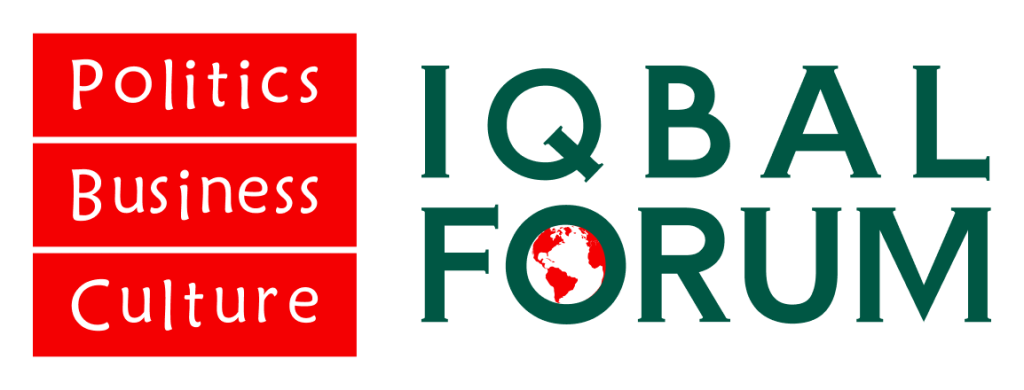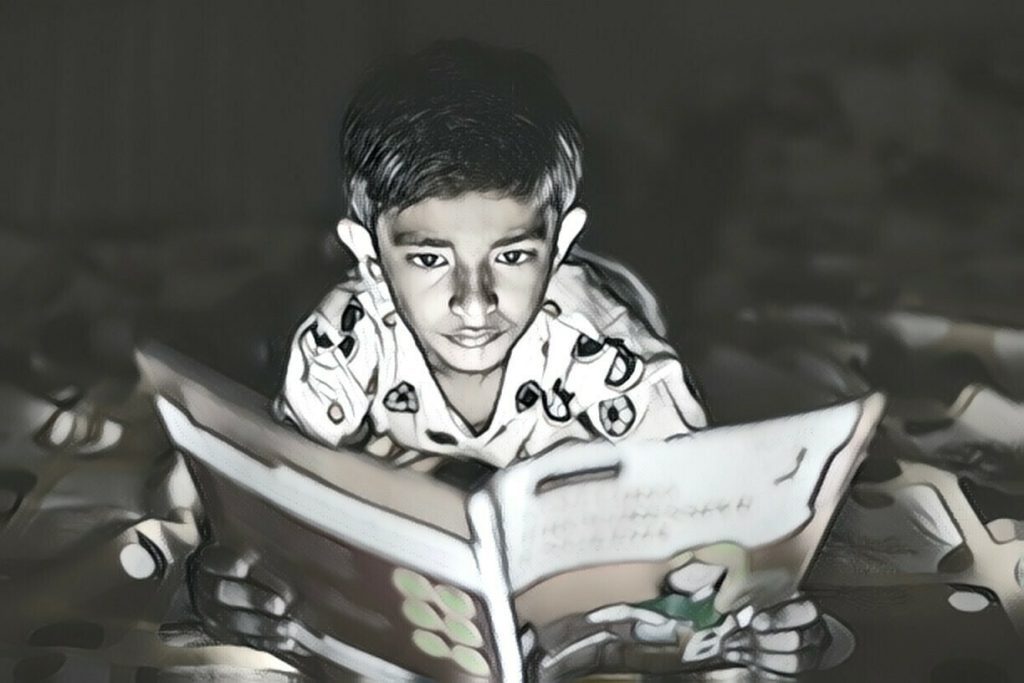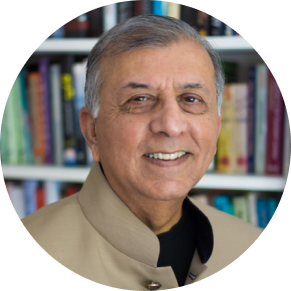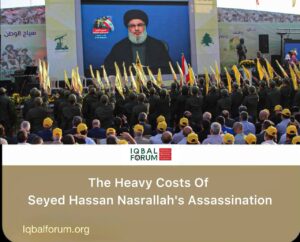For Pakistan to prosper, it must invest in its children
Poor governance and self-serving elites have deprived Pakistan of the chance of becoming an upper-middle income country.
Pakistan remains one of the more important countries in the region, occupying a very strategic location overlooking the Gulf and the Arabian Sea, and abutting Afghanistan, Iran, China, and India.
It is fifth largest in the world in terms of population, though that may be seen as a vulnerability too. And it is a nuclear power, though aimed largely at deterring neighbouring India.
Until recently, Pakistan had a middle class of around 50 million people. But poor governance and self-serving elites have deprived it of the chance of becoming an upper-middle income country.
It is being seen today as Argentina and Brazil were seen in the early and middle 20th century — always the country of the future, but one that never materialised.
Over the years, its policymakers appear to have relied more on hope than well-designed and efficiently implemented policies. They have used their positions to craft policies that added to their own wealth, rather than the common weal. Its middle-class and business leaders too have been reluctant to look over the horizon to craft longer-term strategies that would take them onto the global economic stage, ultimately held back by their desire to benefit from local subsidies rather than to compete on the global stage.
Pakistan’s challenges have become steadily more daunting because they have been ignored for so long, especially — but not only — in terms of human development. It can, however, turn things around even now if it creates the national and political will among its people, through debate and consensus, on creating a more competitive economy and equitable polity, and by investing in its people — especially its youth.
Leveraging the youth
The country deserves a greater deal of respect than it has received, particularly from its own rulers and people. The former, in particular, need to move away from routinely blaming the world for Pakistan’s woes and look inwards to see what Pakistanis can do for themselves. An economically robust and politically stronger Pakistan could garner the respect of friends and foes alike.
To do this, Pakistan needs to develop among other things, its human capital. The country has a sharply rising and very youthful population, which currently stands north of 239m. The median age is 22.8 years, which means that at least half (if not more) of the country’s population has been born since 2000. And the largest population groups, circa 35 per cent, are in the zero to 14 years category.
This means that Pakistan’s population pyramid is very steep. It is a traditional pyramid, meaning that the youngest segments are at the bottom, and as you go up the age brackets, the shape of the pyramid becomes like that of a triangle. The eldest population comes at the very top and they are currently the smallest age demographic.
This rising but youthful population is both a challenge and opportunity. But Pakistan seems to be wasting its potential ‘youth dividend’ — leveraging its young working population to create economic growth — by not investing in its children and youth.
Pakistan’s fiscal situation
The Human Development Index — the measure of a country’s achievements in three basic aspects of human development: health, knowledge and standard of living — in 2018 placed Pakistan at 152nd out of 189 countries. Bangladesh was 135th and India was 129th. These positions keep shifting over time, but they are important in relative terms. Pakistan had a gross domestic product (GDP), of about $348 billion in 2021, and the per capita income was about $1,505. In 1990, India and Pakistan were both at about $370 per person. In 2021, however, India’s income per capita stood at $2,277, almost twice that of Pakistan’s.
The economy’s growth rate is very critical. The World Bank sharply lowered Pakistan’s current year growth forecast, saying the country’s economic growth prospects have weakened due to tighter financial conditions and limited fiscal space. It now expects Pakistan’s economy to grow 0.4pc in the current year, from its October forecast of 2pc growth. The current and predicted growth rate are both well below the population growth rate.
The government’s ability to provide services to its people is constrained by the amount of taxes it can collect. Pakistan’s tax-to-GDP ratio, which is often used as a measure of the country’s ability and its economy to provide for its people, stood at 10.4pc in 2020. This number needs to be higher for Pakistan to be able to provide for its population. At the same time, if Pakistanis increase their savings rate and domestic investment levels by around 14pc (both well below global averages), they could surmount many of the nation’s economic difficulties with their own resources.
According to the Federal Board of Revenue in 2021, there were 2.9m Pakistanis out of a population of 231m, who were income tax filers. Of them, roughly half only pay income tax.
Agricultural income remains un-taxed. Political elites in the sector have come together to ensure this privilege and immunity.
The economy and its manufacturing sector depend heavily on subsidies. In 2013, 50pc of the lawmakers in Pakistan were reported to have paid no taxes. This condition persists. Altering this behaviour alone will not make a great deal of difference unless systemic changes occur in the fiscal regime and unproductive spending is curtailed.
Today, Pakistan is once again on the brink of a serious financial crisis with no easy resolution in sight. The current account deficit in 2021-22 stood at $174bn. The fiscal deficit — the difference between total revenue and total spending of the government — increased by 43pc in the first quarter of 2023. The country’s fiscal deficit has been recorded at 2pc of the GDP or Rs1,683bn during the first six months of the fiscal year 2022-23.
Read more: Self-inflicted economic crisis
The recently appointed Austerity Committee made a valiant attempt to compile a list of potential expenditure cuts across the board. Importantly, it identified potential unproductive spending in both the civil and military budgets and suggested, for the first time ever, an across-the-board cut of 15pc in non-combat defence spending, and all civil spending. After the initial hoopla, however, the discussions behind closed doors in Islamabad produced little results, with each institution, civil and military, finding ways to avoid reduction in spending.
Currently, the Pakistan government gives a so-called ‘development fund‘ or allowance to every single member of parliament, amounting to a whopping Rs90bn. This is to be spent as they please in their constituencies. In the US, such earmarks are called pork-barrel politics — a kind of official bribe.
Cutting back on such expenditures and other extraordinary spending would have, among other things, allowed the International Monetary Fund (IMF) to revive its programme with Pakistan and, after the current sixth review, release the next tranche of payments of over $1bn. Expenditure cuts can work best if accompanied by a rigorous fiscal regime that does not favour elite groups. But a weak and disparate coalition cannot take the decisions needed to achieve such fiscal discipline.
International loans
In order for Pakistan to avert a default on its obligations to its private and public creditors around the world, it needs to get the “good housekeeping seal” approval from the IMF. If it gets this approval and the next tranche of funding, it may be able to get funds from other institutions such as the World Bank, the Asian Development Bank (ADB), and other entities, including the private sector.
But if current trends prove true, the usual friends of Pakistan may not be as forthcoming as they have been in the past. Pakistan will have to bite the bullet itself and find ways of shedding loss-making enterprises and reducing the footprint of heavily subsidised state-owned civil and military enterprises. Instead, it seems intent on expanding that footprint.
Every other potential lender and investor is waiting for a signal from the IMF confirming that Pakistan has made the systemic changes necessary in order to not just keep its head above water, but also to grow at its potential rate, which is around 6pc annually as it has in the past. If it manages to do that, it will stay ahead of its population growth, creating a net of a million jobs a year in a changed agricultural and export sector, instead of currently losing one to two million jobs a year due to import curbs and power shortages. That is how it could become an upper middle-income country.
The Covid-19 impact
But this will not be an easy climb. Another World Bank report released this February has indicated that 1.6m Pakistani youth have been idled as a result of the Covid-19 pandemic. Covid-19 has had a similar effect on young people in all of South Asia.
The report shows that there was an enormous change in school enrolment percentages in Pakistan before and after the pandemic. An approximate 15pc drop in pre-school enrolment was evident by the end of 2021. Enrolment among children between the ages of six and 14 dropped by 6pc once schools reopened and 7.6m children dropped out of school. This is in addition to the normally cited figure of 23m out-of-school-children in Pakistan.
The World Bank estimates that today’s students could lose up to 14.4pc of their future earnings due to Covid-19 induced education shocks. Between April 1, 2020, and March 31, 2022, schools were only partially open; in fact, they were partially or fully closed for 83pc of the time. This was significantly longer than the global average of school closures, which was 52pc for the same period.
Not only did the students miss out on learning due to school closure and ineffective remote learning methods, they also forgot what they had already learned. So, for every 30 days that schools were closed, school-going children lost approximately 32 days of learning on average, according to the World Bank.
And so learning poverty, which was already 60pc before the pandemic, became even more prevalent. An estimated 78pc of 10-year-olds in South Asia are unable to read and understand a simple written text. This is the kind of challenge that we are facing.
Primary education in Pakistan
Primary education is the first stage of free and compulsory education in Pakistan as stated in the Constitution. But that doesn’t necessarily mean it is being provided. Amir Hussain at the Pakistan Institute of Development Economics has identified five grades of formal education for children between the ages of five to nine, and four types of primary schools: public, private, religious, and self-help schools. The medium of instruction, broadly speaking, is English and Urdu, and there is very little formalised instruction in provincial languages — although in practice, it is probably being used.
The National Education Policy of 2009 defined the entry age for pre-primary or katchi, as it’s referred to locally, as three to four years with a one-year curriculum, one dedicated teacher, and a separate room.
Read more: The young in Pakistan
The reality is that there are no separate teachers for katchi grades in 95pc of public schools, and most public schools do not have formal katchi classes. Some provincial governments have recently begun introducing katchi classes in some public schools, but these are multi-grade settings where the teaching is very rudimentary and not well focused.
The statistical map for primary education in Pakistan provides an indication of where the shortfalls occur. Pakistan has a total of 150,000 odd primary education facilities, 131,000, or 88pc of which are public, while the remaining 18,700 (12pc) are private. Around 18.75m children are enrolled in these schools — 61pc in public and the remainder in the private sector. Some 5m children are out of school at the primary level.
Infographic shows the percentage of children enrolled in schools in each province between the ages of 3 and 5. — ASER Annual Status of Education Report 2021
What about the teachers? Pakistan has a little over 324,000 public sector primary school teachers and around 98,000 in the private sector. According to the latest available data from 2018, Pakistan 78pc of these teachers are professionally trained, the majority of whom are males, against a global average of 89pc.
After the 18th Amendment, when much devolution took place in a very disorderly manner from the centre to the provinces, primary education was also devolved as a provincial subject. As a result, the Federal Ministry of Education is now simply reduced to assisting provinces with curriculum development, accreditation, and research and development.
Under Article 25-A of the Constitution, the state is responsible for providing free and compulsory education to all children between the ages of five to 16 years. But Pakistan is the lowest performing country in the Southeast Asia region in this category. Pakistan’s budget allocation towards primary education, according to an ADB report, fluctuates between 2 and 2.5pc of its GDP. There is also no evidence that the funds allocated are actually being used for the designated purposes.
Pakistan, at the central government level, has signed the Sustainable Development Goals (SDG) for 2030 — a global plan to tackle poverty, improve lives, and protect the environment under an internationally agreed set of criteria. Goal number four of the SDG is related to quality education and life-long learning. Pakistan couldn’t achieve its own “Education for All” target by 2015. In the region, Pakistan is ranked at the bottom in the achieving “education for all” category.
In the Global Competitiveness Index, Pakistan lags behind other Asian countries such as India, China, Bangladesh, Sri Lanka, and Malaysia in provision of primary education services. There’s also a huge imbalance between urban and rural areas in terms of children’s enrolment and the share between the public and private sectors.
So the conclusion that we can reach for now is that the primary education system in Pakistan is in a dismal state. It needs a radical and strategic shifting of policies and implementation on multiple fronts. Public-private partnerships as a start could allow the government to bring in successful private sector educational institutions on a much larger scale than is currently happening.
An open national discussion on what is being taught and how it could help put Pakistan on the path of improving its technical and skill-based education is needed. Provinces need to heed these central discussions rather than cede ground to local vested interests that produce low quality text books, for instance.
The change we need
So what is possible in light of these enormous challenges that young people in Pakistan are facing, even as they desperately seek education, good health and development? Many Pakistanis, particularly in the diaspora and in international organisations, have contributed both resources and guidance over the years on some key steps that need to be taken. It is time that the Pakistani political and social elites took account of these suggestions and effectively tackled the learning deficit that clouds future prospects.
The shift to focusing on human development needs to be accompanied by a shift in the growth strategy. The current Pakistani growth strategy that is driven by consumption and government expenditure rather than by investment in exports is not viable. In order to become an upper middle-income country by 2047 — Pakistan’s 100th anniversary — it will need to accelerate and sustain a yearly growth rate of 6-8pc. This was reflected in a report from the World Bank called “Shaping the Future”, published in 2019. Obviously, it could not take into account what would happen immediately after that report was released. The Covid-19 pandemic hit and then there were the 2022 floods. So we are already off track.
Achieving the objective will require sustained and focused educational and structural reforms. But another study by UNICEF shows that within South Asia as a whole, and particularly within Pakistan, after Covid-19, a stable and supportive political climate becomes very critical in ensuring sustained and practicable growth policies. And that is something that Pakistan is lacking at the moment. There are tempting short-cuts, including autocratic rule for a period to “fix things”. But such experiments have failed massively in the past and are a chimera.
Read more: Youth, the nation’s saviours
Pakistan’s growth is stunted by its inability to allocate its talent and resources to the most productive sectors. Most countries face this issue. We have to learn from those that have found ways of encouraging optimal allocation of savings and investments in both the public and private sectors.
The economy and political system is marked by distortions introduced by policy decisions or not addressed by policies. And these distortions are evident in taxes or absence of taxes such as an income tax on agricultural income, as well as poorly designed subsidies going to the richest or to the entire population when they need to be targeted for the poor.
These distortions are also evident in industrial policies that depend on the size of the industries as well as trade restrictions or even gender norms. Pakistan has a low women’s labour force participation rate, which means that it is working with one hand tied behind its back — operating at barely 25pc, compared to Bangladesh at 37pc women in the labor market.
Taken together, these distortions create very powerful incentives for firms as well as households to allocate resources in a manner that are both inefficient and unproductive, and that discourage innovation or improvements in productivity.
Read more: The current crisis could be an opportunity for Pakistan — but can it take advantage?
They also affect the allocation of land and capital. Differences in direct tax rates, for instance, tend to make it very profitable to invest in real estate relative to manufacturing or tradable services. High import duties make it profitable for firms to sell domestically rather than exporting. So for example, the World Bank calculates that in Pakistan, a 10pc import duty on any product increases the profits of selling domestically relative to exporting by 40pc on average. Many Pakistani industrialists prefer being ‘big fishes in a small desi pond’, and living off preferences doled out by the government, rather than competing against and becoming the ‘big fish in the global pond’.
In conclusion, much more than aid, much more than financial assistance from China or Saudi Arabia or the US or the UK, Pakistan needs to look internally and make some decisions about what it wants to do to help education — to help girls, to help its children, and to help its youth; to help them develop physically, emotionally, and intellectually. If it does these things, its youth can become part of a growing service and tech-based economy — an economy based on the development of ideas and innovation of technologies, that is interconnected with the world and will be a hub for service provision to the region, not just a producer of raw material to which other countries are adding value and reaping profits.
This can all be done if its people and leaders stop narrowly pursuing their own interests or that of their group, province, sect or religion, and take a more inclusive approach to give back to the country what the founders of Pakistan gave us. Quaid-i-Azam Mohammad Ali Jinnah and his cohort created a Muslim-majority nation with unrealised potential, now the fifth-most populous country in the world. It should truly aim to become the world’s fifth-largest economy by dint of trying within the next century.





